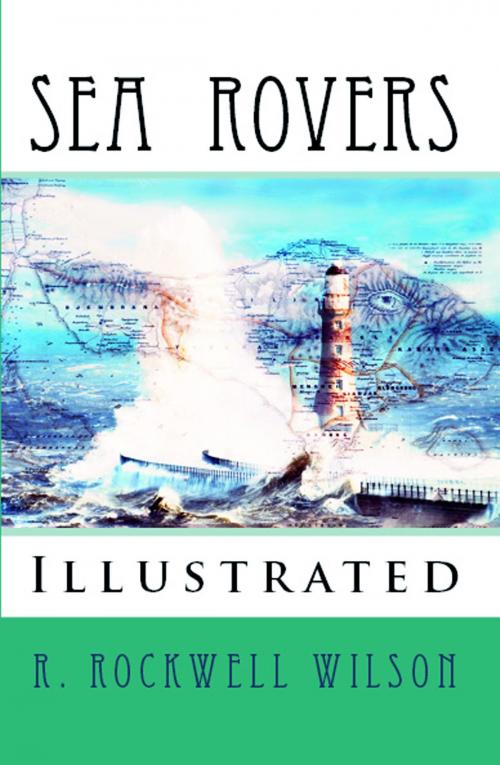| Author: | R. Rockwell Wilson | ISBN: | 9786155564635 |
| Publisher: | eKitap Projesi | Publication: | April 7, 2015 |
| Imprint: | eKitap Projesi | Language: | English |
| Author: | R. Rockwell Wilson |
| ISBN: | 9786155564635 |
| Publisher: | eKitap Projesi |
| Publication: | April 7, 2015 |
| Imprint: | eKitap Projesi |
| Language: | English |
In 1861 Captain Grant succeeded Captain Burgess on Matinicus, taking his son with him as assistant. The old keeper left Abby on the rock to instruct the newcomers in their duties, and she performed the task so well that young Grant fell in love with her, and asked her to become his wife. Soon after their marriage she was appointed an assistant keeper. A few years later the husband was made keeper and the wife assistant keeper of White Head, another light on the Maine coast. There they remained until the spring of 1890, when they removed to Middleborough, Mass., intending to pass the balance of their days beyond sight and hearing of the rocks and the waves.
But the hunger which the sea breeds in its adopted children was still strong within them, and the fall of 1892 found them again on the coast of Maine, this time at Portland, where the husband again entered the lighthouse establishment, working in the engineers' department of the first lighthouse district. With them until his death lived Captain Grant, who in the closing months of 1890, being then aged eighty-five, retired from the position of keeper of Matinicus light, which he had held for nearly thirty years.
Not less lonely, but far more perilous than the life of the keepers of a light like that on Matinicus is the lot of the crew of the South Shoal lightship, whose position twenty-six miles off Sankaty Head, Nantucket Island, makes it the most exposed light-station in the world. Anchored so far out at sea, it is only during the months of summer and autumn that the lighthouse tender ventures to visit it, and its crew from December to May of each year are wholly cut off from communication with the land. It is this, however, that makes the South Shoal lightship a veritable protecting angel of the deep, for it stands guard not only over the treacherous New South Shoal, near which it is anchored, but over twenty-six miles of rips and reefs between it and the Nantucket shore—a wide-reaching ocean graveyard, where bleach the bones of more than a half thousand wrecked and forgotten vessels.
The lightship is a stanchly built two-hulled schooner of 275 tons burden, 103 feet long over all, equipped with fore-and-aft lantern masts 71 feet high, and with two masts for sails, each 42 feet high. The lanterns are octagons of glass in copper frames, so arranged that they can be lowered into houses built around the masts. In the forward part of the ship is a huge fog bell, swung ten feet above the deck, which, when foggy weather prevails, as it frequently does for weeks at a time, is kept tolling day and night. A two-inch chain fastened to a "mushroom" anchor weighing upward of three tons holds the vessel in eighteen fathoms of water, but this, so fiercely do the waves beat against it in winter, has not prevented her from going adrift many times. She was two weeks at sea on one of these occasions, and on another she came to anchor in New York Harbor. Life on the South Shoal lightship is at all times a hard and trying one, and, as a matter of fact, the crew are instructed not to expose themselves to danger outside their special line of duty. This, however, does not deter them from frequently risking their lives in rescuing others, and when, several years ago, the City of Newcastle went ashore on one of the shoals near the lightship, all hands, twenty-seven in number, were saved by the South Shoal crew and kept aboard of her over two weeks, until the story of the wreck was signalled to a passing vessel.
Isaac H. Grant holds a silver medal given him by the Government for rescuing two men from drowning while he was keeper at White Head; while Frederick Hatch, keeper of the Breakwater station at Cleveland was awarded the gold bar. The last mentioned badge of honor is granted only to one who has twice distinguished himself by a special act of bravery. It was given Hatch in the winter of 1898.
In 1861 Captain Grant succeeded Captain Burgess on Matinicus, taking his son with him as assistant. The old keeper left Abby on the rock to instruct the newcomers in their duties, and she performed the task so well that young Grant fell in love with her, and asked her to become his wife. Soon after their marriage she was appointed an assistant keeper. A few years later the husband was made keeper and the wife assistant keeper of White Head, another light on the Maine coast. There they remained until the spring of 1890, when they removed to Middleborough, Mass., intending to pass the balance of their days beyond sight and hearing of the rocks and the waves.
But the hunger which the sea breeds in its adopted children was still strong within them, and the fall of 1892 found them again on the coast of Maine, this time at Portland, where the husband again entered the lighthouse establishment, working in the engineers' department of the first lighthouse district. With them until his death lived Captain Grant, who in the closing months of 1890, being then aged eighty-five, retired from the position of keeper of Matinicus light, which he had held for nearly thirty years.
Not less lonely, but far more perilous than the life of the keepers of a light like that on Matinicus is the lot of the crew of the South Shoal lightship, whose position twenty-six miles off Sankaty Head, Nantucket Island, makes it the most exposed light-station in the world. Anchored so far out at sea, it is only during the months of summer and autumn that the lighthouse tender ventures to visit it, and its crew from December to May of each year are wholly cut off from communication with the land. It is this, however, that makes the South Shoal lightship a veritable protecting angel of the deep, for it stands guard not only over the treacherous New South Shoal, near which it is anchored, but over twenty-six miles of rips and reefs between it and the Nantucket shore—a wide-reaching ocean graveyard, where bleach the bones of more than a half thousand wrecked and forgotten vessels.
The lightship is a stanchly built two-hulled schooner of 275 tons burden, 103 feet long over all, equipped with fore-and-aft lantern masts 71 feet high, and with two masts for sails, each 42 feet high. The lanterns are octagons of glass in copper frames, so arranged that they can be lowered into houses built around the masts. In the forward part of the ship is a huge fog bell, swung ten feet above the deck, which, when foggy weather prevails, as it frequently does for weeks at a time, is kept tolling day and night. A two-inch chain fastened to a "mushroom" anchor weighing upward of three tons holds the vessel in eighteen fathoms of water, but this, so fiercely do the waves beat against it in winter, has not prevented her from going adrift many times. She was two weeks at sea on one of these occasions, and on another she came to anchor in New York Harbor. Life on the South Shoal lightship is at all times a hard and trying one, and, as a matter of fact, the crew are instructed not to expose themselves to danger outside their special line of duty. This, however, does not deter them from frequently risking their lives in rescuing others, and when, several years ago, the City of Newcastle went ashore on one of the shoals near the lightship, all hands, twenty-seven in number, were saved by the South Shoal crew and kept aboard of her over two weeks, until the story of the wreck was signalled to a passing vessel.
Isaac H. Grant holds a silver medal given him by the Government for rescuing two men from drowning while he was keeper at White Head; while Frederick Hatch, keeper of the Breakwater station at Cleveland was awarded the gold bar. The last mentioned badge of honor is granted only to one who has twice distinguished himself by a special act of bravery. It was given Hatch in the winter of 1898.















